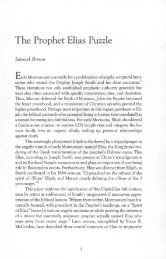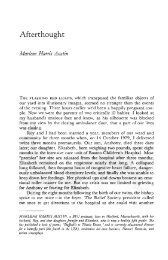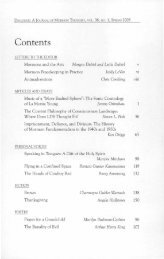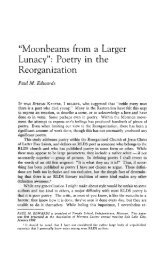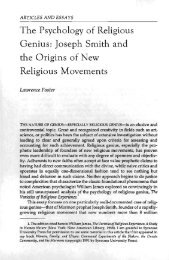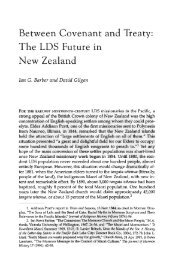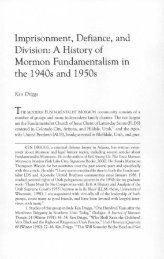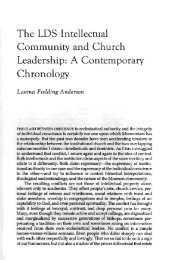Dialogue, Volume 25, Number 2 - Dialogue – A Journal of Mormon ...
Dialogue, Volume 25, Number 2 - Dialogue – A Journal of Mormon ...
Dialogue, Volume 25, Number 2 - Dialogue – A Journal of Mormon ...
You also want an ePaper? Increase the reach of your titles
YUMPU automatically turns print PDFs into web optimized ePapers that Google loves.
48 DIALOGUE: A JOURNAL OF MORMON THOUGHT<br />
tors and congregations became the instigators and protectors <strong>of</strong> an ethnic<br />
revitalization movement against both the Spanish-speaking church<br />
and the society at large. 7 Ironically, the very leadership and organizational<br />
skills people learn in their respective churches may unwittingly<br />
connect their denominations to social events far removed from their<br />
stated religious objectives. Furthermore, outside groups <strong>of</strong>ten try to<br />
manipulate these congregations for their own partisan ends. This reportedly<br />
took place in Central America where individual governments used<br />
the <strong>Mormon</strong>s and other religious sects to "control" the lower classes.<br />
Bastian's depiction <strong>of</strong> the Summer Institute <strong>of</strong> Linguistics as a religious<br />
transnational radically different from other Protestant groups<br />
forces us to note the similarities between the Church and other multinational<br />
corporations (Aaby and Hvalk<strong>of</strong> 1981; Stoll 1982). Like the<br />
multinationals, it has significant financial and property holdings, having<br />
built numerous chapels, hired employees, and involved itself in the<br />
gathering and transferring <strong>of</strong> merchandise and funds both within and<br />
out <strong>of</strong> the country. In addition to political arrangements, Church leaders<br />
cultivate economic relationships with businesses and business leaders<br />
who benefit materially from the Church's presence. We need to<br />
explore the ways these social networks condition LDS activities and<br />
growth in given countries. Moreover, our analysis should probe the<br />
economic as well as institutional structure <strong>of</strong> the Church without ignoring<br />
the conflicts that inevitably arise between these forms and its<br />
ostensible spiritual aims.<br />
In many countries, LDS ecclesiastical leaders are also Church<br />
employees, most <strong>of</strong>ten employed by the Presiding Bishopric's <strong>of</strong>fice.<br />
This means that, in effect, the Church creates a form <strong>of</strong> pr<strong>of</strong>essional<br />
clergy; the hope or expectation <strong>of</strong> Church employment fulfills an important<br />
spiritual function for Latin members. Testimonies run the risk <strong>of</strong><br />
becoming dependent on employment and on the continued maintenance<br />
<strong>of</strong> the bureaucracy. In fact, this sort <strong>of</strong> spiritual nepotism could<br />
lead to nascent corruption, especially if the Church bureaucracy follows<br />
regional cultural norms. Gossip is rife within local Church circles<br />
about just such cases.<br />
As a result, we must see the Church in Latin America as more<br />
than simply a spiritual organization to bring about the salvation <strong>of</strong><br />
humankind. Its economic and organizational structure, within the Latin<br />
American context, must also be taken into account. Probing the transfers<br />
<strong>of</strong> funds and information and the pr<strong>of</strong>essional castes that benefit<br />
from the organization, we find tensions and issues beneath the surface<br />
7 The Methodist scholar and pastor Jorge Panteliz made this point in a public<br />
lecture on the history <strong>of</strong> Protestantism in Bolivia (La Paz, Bolivia, July 1985).








